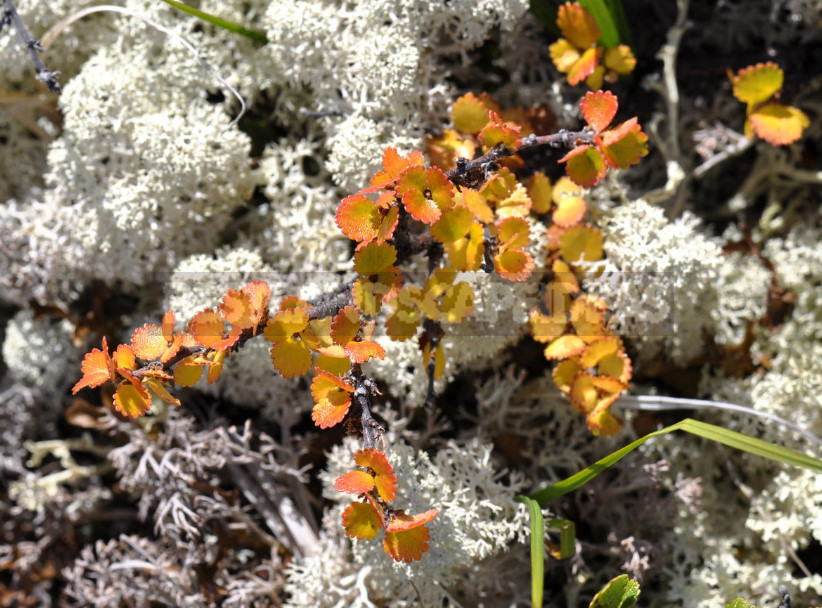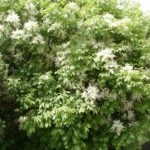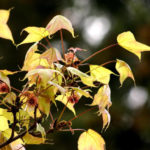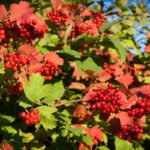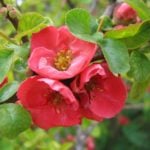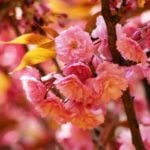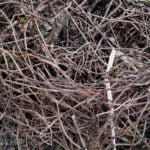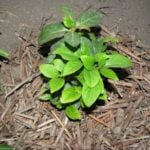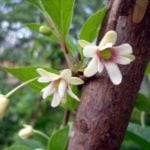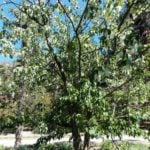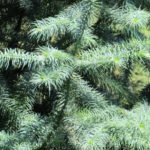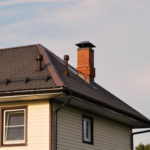In the vast expanses of the tundra, in the mountains at an altitude of over 500 m (546 yard), as well as in the sphagnum swamps in the taiga zone, this unusual tree – Betula nana-grows.
In their habitat, it forms impenetrable thickets. I met them both in the mountains. Numerous gnarled branches intertwine so thickly and tightly that it is simply impossible to get through them.

The tree is fully adapted to the harsh conditions of the areas in which it lives, and this, note, the northern expanses of Siberia and Canada (the Arctic zone). In other regions, it can be seen in the mountains, for example, where this plant rises to a height of 2000 m (1.2 mile). It grows as a miniature birch also in the Alps and Highlands of Scotland.
Botanical description
Betula nana belongs to the genus Betula of the Birch family. It is a shrub with a height of 20 to 80 (0.6-2.6 ft), rarely up to 120 cm (3.9 ft). From the sloping trunks there are numerous strongly branched stems that grow up and to the sides, so that the crown has an open shape. In winter, low snow levels effectively shelter the plant from severe frosts north of the blizzard.

Young twigs are similar to velvety, slightly pubescent, later becoming glabrous with rough gray-brown bark. They do not have a characteristic color.
The leaves are small (no more than 15 mm/0.6 in), green, rounded, with denticles on the edges, arranged alternately. The leaf blade is smooth, shiny on top, and light-matte and slightly fluffy on the bottom. The leaves sit on short stems. With the onset of autumn, the leaves first turn very bright red and orange, decorating the slopes of mountains or the vast expanses of tundra, and then fall off.

The shapes and earrings of Betula nana are small, oval, and of a rather bright yellow-green color. Flowering occurs in May before the leaves open, and in June the seeds ripen.
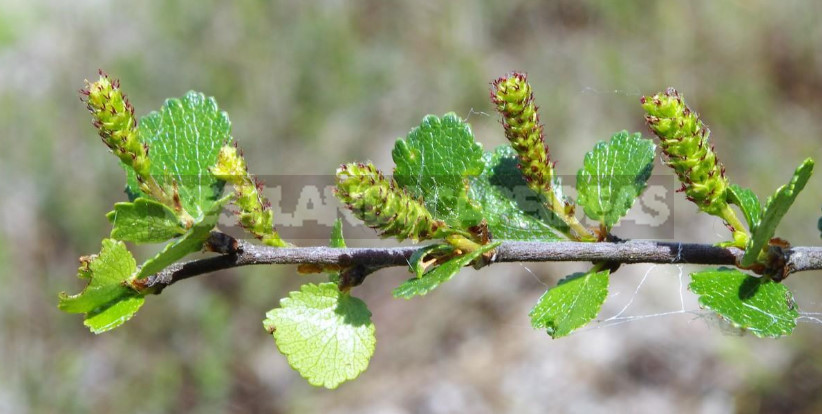
The roots of Betula nana do not go inside, but spread out to the sides, looking for a place among the rocks and permafrost. The tree grows slowly.
Breeders brought out the variety “Golden Treasure” – a miniature plant with a height of no more than 80 cm (2.6 ft), the crown of which grows up to 1.5 m (4.9 ft) wide. Numerous shoots of a rich brown color are small round leaves of a delicate golden color, in autumn their color becomes more intense.

The variety is not only extremely hardy, but can also grow in very wet and flooded areas of the garden, and in summer is able to tolerate short-term drought.
Cultivation
First you have to wonder how and where you can get Betula nana. You can bring them from a trip to the mountains, they are sold in garden centers, and this plant is also grown from seeds.
If the Betula nana seedlings are obtained, proceed to prepare the place for planting. It makes no sense to dig deep holes – the roots of this plant are small, but it is necessary to add peat, sand, humus and a little gravel to the usual garden soil.
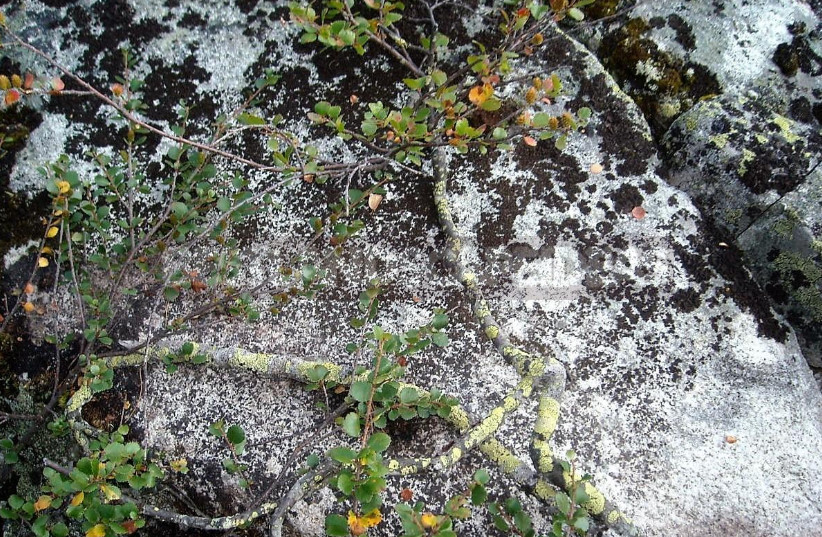
The roots of the plant are placed in a hole, spreading out to the sides, sprinkled with soil and watered abundantly. Betula nana loves moisture, and after planting it must be properly watered, especially for the first time.
In the future, this plant will not need special attention from the gardener. In dry summers, it requires watering and spraying. Twice a season, it is advisable to feed NPK in the spring, and in the summer with any complex fertilizer.
Loosen the ground under the bushes is not recommended, so as not to damage the roots. It will be very good to mulch the stem circle with any material-sawdust, peat, needles, tree bark or even crushed stone – this will protect the plant from heat and rapid evaporation of moisture from the soil. You do not need to cover this plant for the winter.
Reproduction
In the middle zone, the seeds of Betula nana have time to ripen. For breeding, they are sown immediately after harvesting or in late autumn under the snow.
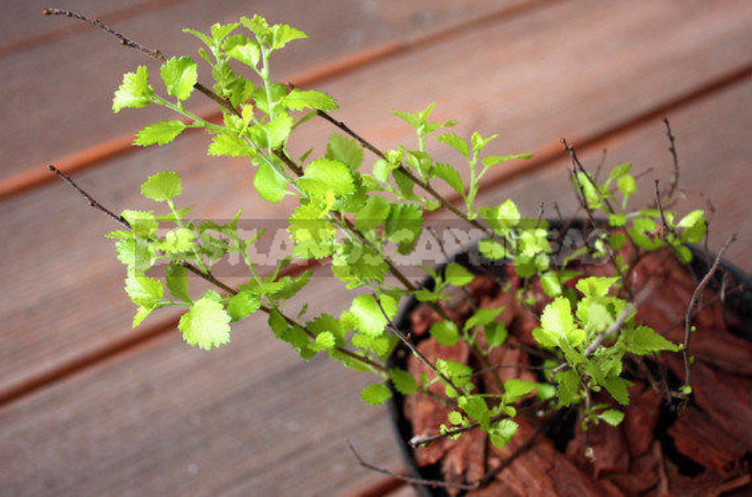
Unlike the common birch, Betula nana is well propagated by cuttings. The cut branches are placed in water, where they take root perfectly. Then the cuttings are planted in a pot or immediately in a permanent place.
Betula nаna in garden design
This type of plant with a very specific natural habitat would seem to be not quite suitable for our ordinary gardens. But this is only at first glance.

Dwarf trees will appeal to lovers of exotic landscapes, arranging mountain slopes and alpine slides, or those who want to recreate an island of Arctic nature in the garden.
If you plant these plants near a pond next to beautiful stones and add other Alpine plants, you will get excellent compositions.

Betula nana is suitable for creating a hedge. They are ideal for this, the dense interweaving of their shoots forms a dense green hedge. By planting a birch tree in a shallow ceramic pot, you can create an amazing bonsai. As you can see, with some imagination, the use of this exotic plant in the garden is very extensive and diverse.

Dear readers, share in the comments whether you have met betula nana in nature, and if it grows in your garden, write how you take care of it. What other unusual plants do you grow on your site?
